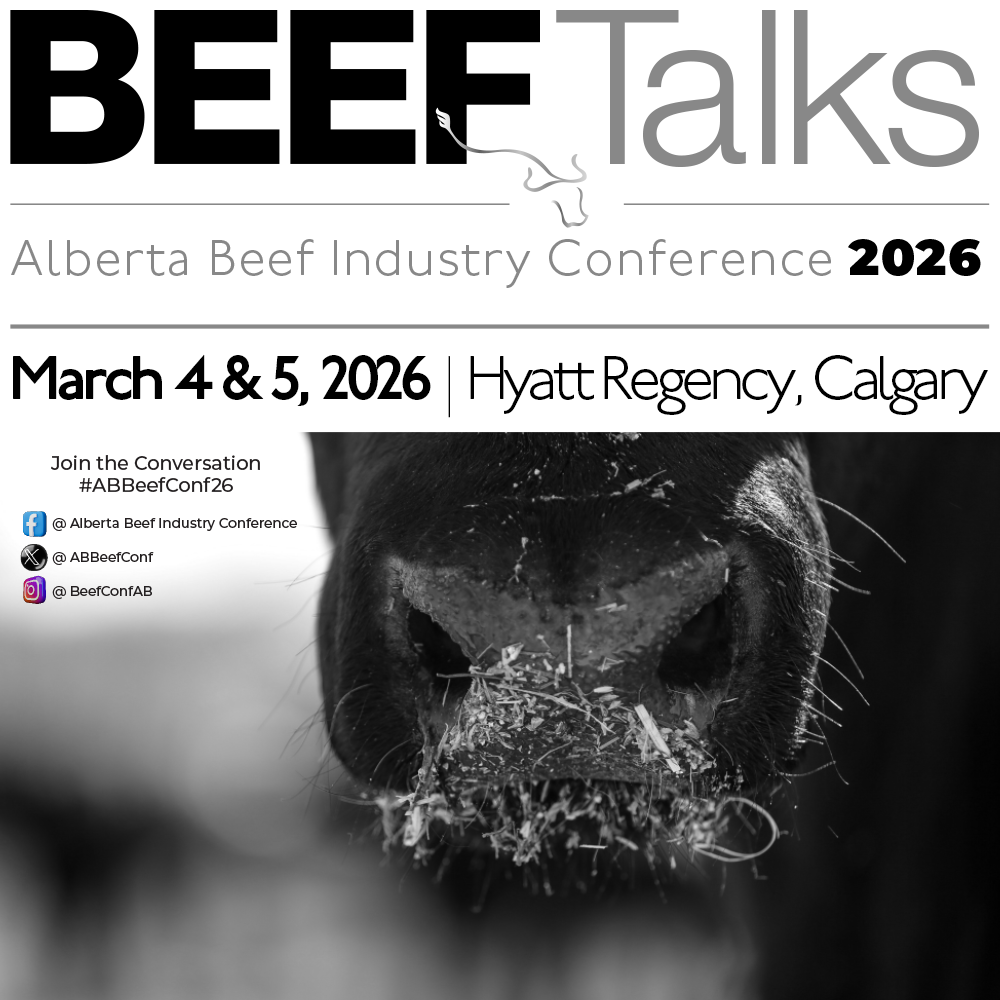AB Direct - Steers
Rail: 492.00-493.50 FOB feedlot (last week)
AB Direct - Heifers
Rail: 492.00-493.50 FOB feedlot (last week)
US Trade- Steers
Rail: 355.00-363.00 (IA, NE) last week
US Trade - Heifers
Rail: 355.00-363.00 (IA, NE) last week
Canadian Dollar
0.19

Winter stewardship…check
As the shortest and coldest days approach, now is the right time to prepare the herd for the worst winter might bring. We asked veterinarian Dr. Roy Lewis to help us check off chores to complete now, before the chilliest days arrive.
Feed
Start by ensuring you have secured enough winter feed for the size of your herd. “Thankfully, feed supplies are easier to source this year than last,” says veterinarian Dr. Roy Lewis.
Water
Given the dry fall we had, it’s more important to double check water sources. Check dugouts for water quality and depth, ensure you have enough for winter, and address any issues with water freezing. “The good news is water consumption goes down to about half in the winter from what it is in the summer. But big cattle herds still drink a ton of water, so you want to be prepared,” says Dr. Lewis.
Nutrition
Test feed to ensure it meets the herd’s nutritional requirements. “Even when it looks good, it may not be as nutritious as we’d like. Whether you’re feeding hay, silage, straw, or whatever, you want to ensure the supplemental vitamin and mineral components you need have been sourced or are on hand,” Dr. Lewis says.
Health
Are all health management procedures and treatments caught up? “It’s good to get health in order now, because in the winter any health issues will be exacerbated, whether it’s bad feet, lameness, chronic infections, or whatever,” says Dr. Lewis. “This also applies to treatments like parasite control or vaccinations. It’s best to do these before it’s too cold to do anything, provided the timing is right.”
Supplies
When it comes to supplements, medications, and vaccines, it’s wise to stock up now – if you can. “I feel for farmers…why stock it now if you don’t need it for three months? But we find there can be shortages of the most bizarre things right now. We almost have to have an inventory of everything six months ahead, because it’s surprising what will all of a sudden run short,” Dr. Lewis says.
One example is a scours vaccine that is expected to be back ordered this winter. “Fortunately, there are three scours vaccines, but the shortage of one creates a domino effect as producers look for alternatives, so the others may run out too if they’re not prepared for the increase in demand,” says Dr. Lewis.
Weaning
Have you weaned the calves where they know the location of feed and water? “There are so many techniques for low-stress weaning, from two stage to fenceline. It’s something interesting for producers to look at and think about, if they haven’t already,” Dr. Lewis suggests.
Pregnancy
Have you pregnancy checked the cows and made good decisions about which to ship and which to feed over the winter?
Body condition
Measure body condition scores – roughly, Dr. Lewis suggests. “A rough estimate is fine. What I’m really looking for is to identify those few cows that are way too fat or too thin. That’s the purpose of it really.”
Feed extra now to any animals with low scores. “It’s tough to put on weight in January when it’s 30 below, so it’s better to feed extra now to get them into better shape. When they’re better insulated for winter, it supports both their health and the health of the unborn calf,” says Dr. Lewis.
Herd management
Have you made culling decisions and arranged to market any animals that are getting shipped, either to auction mart or plant? “There is more direct movement to the plant happening now, which eliminates extra transportation. It’s a real positive for both producers and the animals,” Dr Lewis says.
Calving season
Calving season tends to creep up. Prepare now by securing a supply of gloves, castration rings, lubricant, surgical soap, selenium, vitamins A and D, and anything else you may need. Also, is your calving area ready? “One of the last things we think about is getting pens cleaned out to be ready for spring, but it’s a lot easier to mend fences and move manure in the fall – you’re not going to get it out in January,” says Dr. Lewis.
Biosecurity
To support biosecurity, ensure vaccinations are up to date, and that facilities are kept clean to reduce infection and disease spread. “Moving manure provides a double benefit, because you get fertilizer you can spread on your fields at the same time as the pens get cleaned out,” Dr. Lewis says.
Bulls
Don’t forget about your herd starters. Are they in good shape for breeding? It’s wise to put them in a protected area and provide bedding for winter so they don’t get frostbitten testicles. Attend to any nutritional needs, vaccinations, and health problems now. “They are the hardest to handle, but many things can be done without handling. It’s better to attend to their needs ahead of time than wait until two weeks before breeding season, and then realize they’re lame,” says Dr. Lewis.
Ask an expert
Last but not least, check with your veterinarian, nutritionist, hoof trimmer, or other expert for help with any health concerns or treatment questions. Find excellent information online at abpdaily.com, beefresearch.ca, and cattle.ca.
This article was first published in Volume 2 Issue 5 of ABP Magazine (December 2022). Watch for more digital content from the magazine on ABP Daily.


